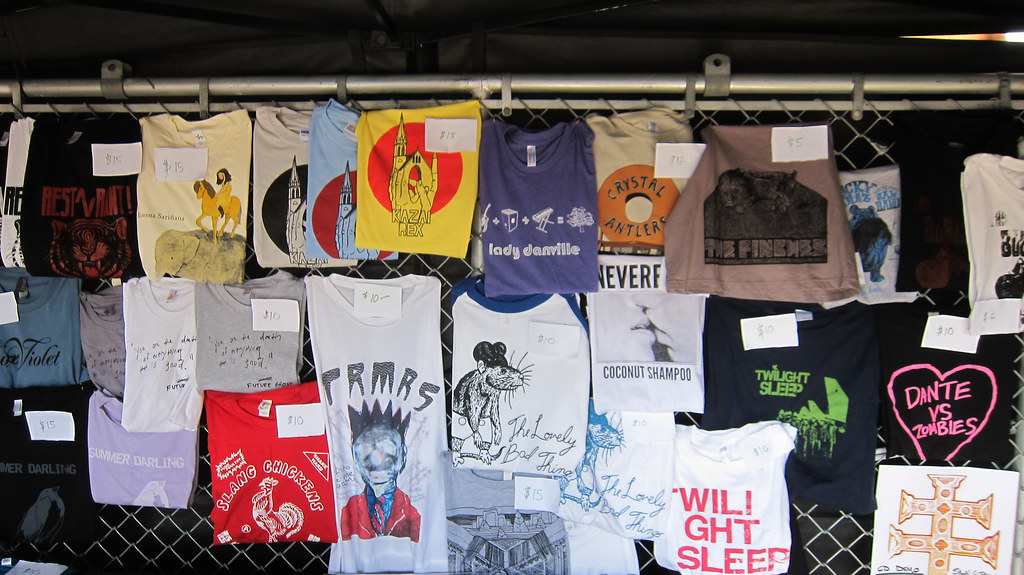Band merch first emerged in the 1950s when an Elvis Presley fan club decided to design and produce their own t-shirts. But it wasn’t until the 1960s that merchandise began to become a big business. Tour promoter Bill Graham, who produced shows for bands like the Jefferson Airplane, had the idea of turning fans into ‘walking billboards’. The Beatles’ merch, including branded lunch boxes, pins and badges, followed, as did iconic t-shirts from rock bands like The Rolling Stones and, later, Nirvana.
Merchandise has become a fundamental part of the music industry. Its origins show that merch is important to fans as a way of building a community of shared interest, to feel and signal a sense of connection with their favourite musician. But the early commercialisation of this need may, ironically, be leading to its downfall now, over 60 years later.
For example, band tees bought in the past were treated as prized possessions, indicating that the wearer was part of a select crowd who experienced some legendary concert. Now, though, many of these designs are being replicated and sold by fast fashion companies. This has led to merch feeling increasingly impersonal and we now often hardly notice when someone is wearing it.
Merch is also used cynically by some artists now to get more streams and push them up the charts, like in 2018 when Travis Scott threw in an album “for free” with a purchase of merch to overtake Nicki Minaj in sales. With the introduction of streaming services, merch has become one of few ways that artists, both big or small, can make serious money. This has tended to increase its commodification. Perhaps this is why Taylor Swift’s merchandise has been slated recently for being overpriced and simplistic – it fails to connect with fans because it’s too impersonal.
However, there are still examples of current artists doing merch well. Take Boygenius’ ironic heavy metal t-shirts that have been successful with fans at least in part because they create a kind of in-joke. Lana Del Rey’s merch, which includes a dog whistle and a motorbiking jacket, has also done well, because it feels on-brand and purposeful. Similarly, artists like Beyoncé, who bridge the gap between the music and fashion world, have always produced merch that resonates with fans. From the opposite perspective, designers like Vivienne Westwood, who created an era of punk fashion in the 1970s, have also been able to fuse the two industries and create merch that people actually want to wear.
While the merch we see today hardly resembles the fan-based project it originated as, the creativity of some artists means that it remains important to fans and to the industry. The impact of technology on music has also had a knock-on effect on merch, shown when Travis Scott sold digital merch for avatars during his Fortnite concert in 2020. Examples like this show that the way we consume music and, by extension, merch, is always changing, but that this also brings potential for both to be reinvented in new and more relevant ways.
“tshirts of our fave local bands” by andysternberg is licensed under CC BY-NC-SA 2.0.

